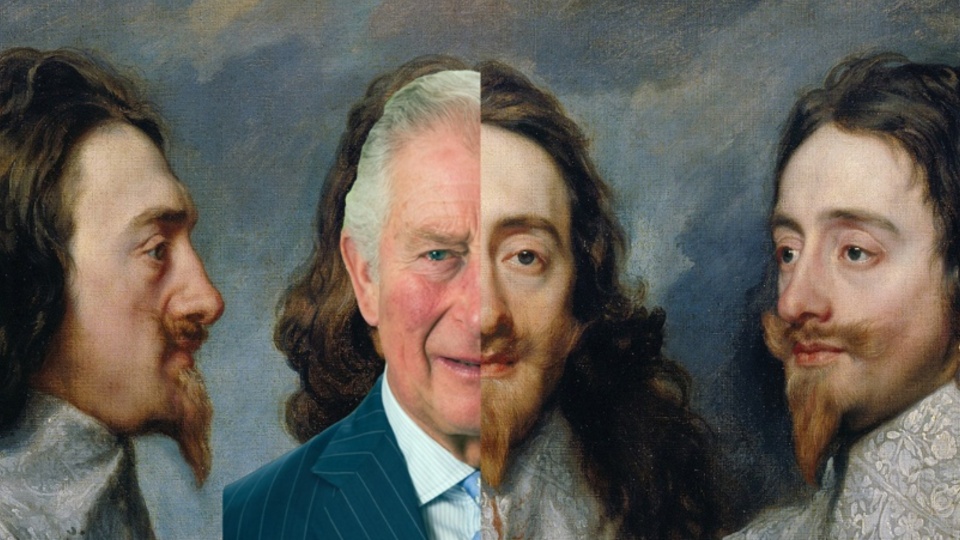
What better way to mark the coronation of King Charles III than to recall the execution of one of his predecessors, Charles I, as the crowning moment of a revolution?
That’s one aspect of author Jonathan Healey’s new book, The Blazing World: A New History of Revolutionary England.
The dethronement of Charles in 1649 ushered in an unprecedented experiment in republicanism amid extraordinary ideological ferment the likes of which England has not experienced since.
Given the accession of his namesake to the throne, it is tempting to make comparisons between the 17th-century monarch and that of today. There are profound differences, however, of course.
While Charles III embodies an institution that is both outdated and increasingly irrelevant, this was obviously not the case for his predecessor, whose absolutist disdain for an emergent Parliament stoked a civil war.
Another clear distinction was the religious backdrop to Charles I’s reign, whose defining feature was the English Reformation. While the king’s efforts to enforce religious uniformity can be understood in the context of dilemmas facing any ruler in a country experiencing a proliferation of new denominations, today Christianity is also largely irrelevant—even if Charles III has somehow still managed to irk the Anglican faithful.
Nonetheless, there are also similarities between then and now. First, the downfall of Charles I could not have occurred had he not been detached so comprehensively in mind and body from the commoners he was supposed to rule. The portrait Healey paints is of a haughty character given to strategic miscalculation whose unwillingness to compromise derived from a blind faith in exceptionalism.
The author writes: “Charles himself must carry much of the blame: He had been a stuffy authoritarian, but never ruthless enough to be a successful tyrant… He was only ever successful at inspiring those who already agreed with him, and his pathological inability to understand his opponents’ position would cost him dear.”
Charles III—worth £1.8 billion ($2.26 billion USD) by the latest estimate—seems also to be detached from reality. He displays a similarly petulant need to be the center of attention, unconstrained by convention, an unwillingness to acknowledge limited public appetite for his whims and an addiction to applying undemocratic leverage to elected politicians.
Second, the revolution that overturned Charles I’s reign was fuelled by a novel politicization of the population throughout the 1640s. The language of dissent was usually religious but often reflected underlying political or class tensions. Oliver Cromwell himself later said: “Religion was not the thing at first contested for.”
What chimes today is that this politicization was fuelled by the extraordinarily rapid growth of new social media. The press and publishing expanded rapidly, as newspapers, tracts, booksellers, and freelance pamphleteers spreading “fugitive literature” popped up everywhere to stir an unruly people who were animated by populism in its original sense, namely: a belief in the popular origins of legitimate power.
Ferocious constitutional debates raged, and as Healey shows so eloquently, the ideological ferment was intensely radical, revealing the illegitimacy of monarchy and unleashing democratic demands, but also shaping utopian fantasies. A high point were the Putney Debates between Cromwell and mutinous Levellers in the now self-organized New Model Army over the political settlement that should follow Parliament’s triumph.
The author writes: “The revolution brought an extraordinary moment of ideological creativity. The monarchy had been the keystone to the entire social order, from politics to the family, but the regicide had the potential to bring all this crashing down.”
Yet the real protagonist of this period was not the great unwashed—who were, ultimately, just a volatile mob—but an increasingly self-conscious Parliament. The merit of Healey’s history is that, while our instinct is to focus on the monarchy and Lord Protector, what made this era so revolutionary was not solely the abolition of feudal governance but elite efforts to tame the beast they feared most: popular sovereignty.
For Parliament is at the heart of the 17th-century story at every turn, its own sovereign ambitions waxing and waning, the corruption, duplicity, and opportunism of its members a recurrent trait. And inevitably, Parliament would become the source of the counter-revolution.
At the end of the day, both Charles I and Cromwell expended most of their energies testing the boundaries of this parliamentary ambition, with the monarch’s execution a sideshow to a broader struggle for power.
It would be the Lord Protector’s provincial conservatism that then spiked the revolutionary cannons: Cromwell challenged the political, but not the social, order.
As a result, his death bequeathed a power vacuum that a by then conservative Parliament simply stepped forward to fill. If republicanism was suffocated at birth in England, however, it would ultimately ignite revolutions in France and America.
Healey writes: “One of the great tragedies of Cromwell was that he prevented the Republic being so much more.”
Perhaps, then, the only real lesson of the 17th century for us now is that Parliament—as a distant proxy for a hypothetical “people”—once had sufficient confidence to decapitate an executive with contempt for the constitution.
If only today it could be so bold.
The Blazing World: A New History of Revolutionary England
Jonathan Healey, Bloomsbury, £30
Morning Star
We hope you appreciated this article. At People’s World, we believe news and information should be free and accessible to all, but we need your help. Our journalism is free of corporate influence and paywalls because we are totally reader-supported. Only you, our readers and supporters, make this possible. If you enjoy reading People’s World and the stories we bring you, please support our work by donating or becoming a monthly sustainer today. Thank you!










